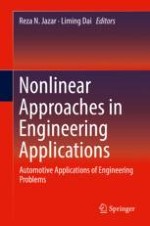2020 | OriginalPaper | Chapter
2. Artificial Intelligence and Internet of Things for Autonomous Vehicles
Authors : Hamid Khayyam, Bahman Javadi, Mahdi Jalili, Reza N. Jazar
Published in: Nonlinear Approaches in Engineering Applications
Publisher: Springer International Publishing
Activate our intelligent search to find suitable subject content or patents.
Select sections of text to find matching patents with Artificial Intelligence. powered by
Select sections of text to find additional relevant content using AI-assisted search. powered by
